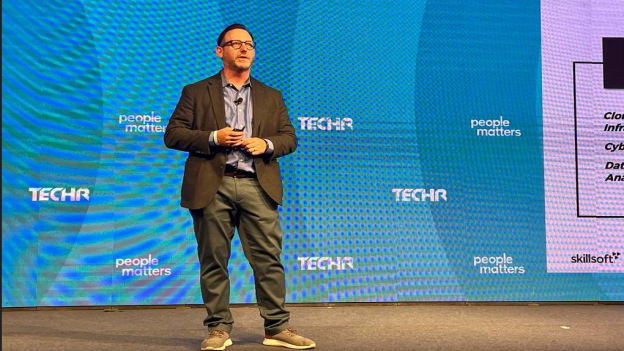How to invest in career growth to drive transformation: Insights from TechHR Keynote
Get Set Learn Read similar articles

“94% of business leaders expect employees to learn new skills on the job. And 50% of employees need reskilling by 2025, said Mark Onisk, Chief Content Officer, Skillsoft citing research by the World Economic Forum on day two of the People Matters TechHRIn.
As companies navigate a transformation in the world of skills, they need to map their L&D strategy with a view of the future. The path forward will be to align career aspiration with a critical skills gap that accelerates skill transformation at scale. But how do companies do this?
Define the framework
One of the first steps that companies should focus on is understanding the key skills and roles that are likely to shape the future. What areas of the organisation are most critical? To do this, companies need to leverage taxonomies to develop future skills.
Focusing on skill taxonomies enables the organisation to understand better the roles and skills that are continuously changing. Companies can also build role-based skills frameworks. Take, for example, future-critical functional skills, which would include: Business analytics, digital marketing, design thinking, product management, customer experience and customer service.
Create your journey
Once the skills and roles are established, curate and align into paths that close gaps and provide growth. For example: “Skills benchmarks” on Percipio uses twenty questions to assess proficiency in skill and create a personalised learning path.
A “career journey” approach helps to link role-based career paths by supporting a learner from awareness to mastery within a domain. The benefit of this approach is that learning opportunities can be sequenced and curated on the go. For example, a novice role as a generalist as a cyber generalist can grow towards a specialisation that could have wide-ranging opportunities like Ethical hacking, Forensic Specialist, Defence Specialist, CompTIA stack Master and so on.
Align rewards and incentives
Offering credentials of value to the workforce and encouraging them to share their accomplishments greatly help drive learning outcomes.
“Portable, shareable records of achievement can now be verified via the blockchain. Today’s technology allows stackable badges from course completion to track completion to finishing the learning journey.” For example, an implementation course for DevOps could be followed up with the DevOps lead and then enterprise developer to DevOps engineer. Rewards and incentives are critical to completing the learning cycle.
Watch the complete keynote:




